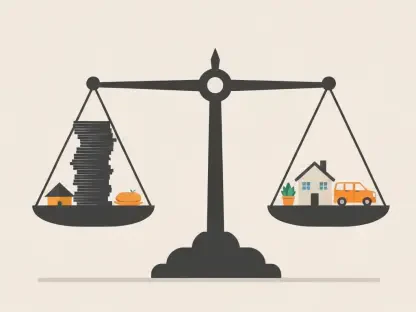Retirement planning among small business owners in the United States reveals a fascinating tapestry of perspectives shaped by age and gender, reflecting broader cultural and economic shifts. A recent comprehensive report surveying 1,000 small business owners uncovers stark contrasts in how different generations approach the idea of offering retirement plans, as well as how men and women perceive the challenges and opportunities in this space. These differences are not just academic; they signal evolving workplace norms and highlight the need for tailored strategies to encourage plan adoption. As employee benefits become a cornerstone of talent attraction and retention, understanding these divides offers critical insights into fostering financial security for workers while addressing business owners’ unique concerns. This exploration delves into the nuances of generational attitudes, gender-based readiness, and the overarching barriers that shape the landscape of employer-sponsored retirement benefits.
Generational Perspectives on Retirement Benefits
Millennial and Gen Z Enthusiasm for Plans
Younger small business owners are demonstrating a remarkable commitment to providing retirement benefits, driven by a keen awareness of modern employee expectations. Millennials, with a median age of 37, stand out as the most enthusiastic, with a striking 77% considering these plans essential to their business model and 66% feeling prepared to implement them. This proactive stance likely stems from a cultural shift toward valuing comprehensive benefits as a competitive edge in tight labor markets. Similarly, Gen Z owners, despite a median age of just 21, show impressive readiness, with 67% viewing plans as important and 63% confident in their ability to offer them. Their forward-thinking approach suggests an early recognition of long-term business advantages, such as improved employee loyalty and morale, which are becoming increasingly vital in today’s workforce dynamics.
Gen X Hesitation and Proximity to Retirement
In contrast, Gen X small business owners, with a median age of 53, exhibit a more cautious outlook on retirement plans, reflecting perhaps a different set of priorities shaped by their life stage. Only 57% of this group report feeling ready to offer such benefits, a significantly lower figure compared to their younger counterparts, despite being closer to retirement age themselves. This hesitation may be tied to a focus on immediate financial stability over long-term employee benefits, or possibly a perception that the administrative burden outweighs the advantages. The data suggests that Gen X owners might benefit from targeted education on how retirement plans can address broader business challenges like retention, while also securing their own future. Bridging this readiness gap could be key to ensuring that businesses led by this generation remain competitive in attracting talent amidst evolving workplace expectations.
Gender-Based Approaches and Barriers
Women’s Openness to Learning and Incentives
Gender differences among small business owners reveal distinct approaches to retirement plan adoption, with women showing a notable willingness to engage with solutions. Among those not currently offering plans, only 51% of women cite their business as unready, compared to 64% of men, indicating less reluctance to explore options. Furthermore, female owners express a stronger interest in understanding policy incentives, such as tax credits under the SECURE 2.0 Act, which can offset the costs of starting a plan. This receptiveness to education and support suggests that women may be more likely to adopt plans if provided with accessible resources and clear guidance. Their openness positions them as a critical demographic for outreach programs aimed at increasing retirement plan coverage, potentially narrowing the gender gap in this area over time.
Men’s Greater Hesitation and Perceived Barriers
On the other hand, male small business owners appear more hesitant to embrace retirement plans, often citing structural and financial barriers as deterrents. With 64% of men not offering plans stating their business isn’t ready, this group seems to perceive greater obstacles, possibly due to concerns over cost or complexity. Unlike women, men show less inclination to seek out information on incentives or support mechanisms that could ease implementation. This disparity highlights a need for targeted strategies that address specific concerns among male owners, such as simplified administrative processes or case studies demonstrating tangible benefits like enhanced employee retention. Understanding and tackling these reservations could help shift perspectives and encourage broader adoption of retirement benefits across gender lines.
Overcoming Common Challenges
Addressing Cost and Complexity Concerns
Despite the clear advantages of offering retirement plans, many small business owners grapple with significant hurdles that impede adoption. Cost remains a primary concern, cited by 36% of owners, followed closely by business size constraints at 34% and administrative complexity at 32%. These barriers often loom large for owners with limited resources or expertise, creating a perception that such benefits are out of reach. However, evidence suggests that the long-term gains—such as reduced worries about inflation, labor costs, and turnover—far outweigh initial investments. Initiatives that simplify plan setup and provide financial assistance could play a pivotal role in dismantling these obstacles, making retirement benefits a feasible option for businesses of all sizes.
Leveraging Professional Guidance for Success
Access to professional support emerges as a critical factor in overcoming barriers to retirement plan adoption among small business owners. While 61% of those without plans express a willingness to seek guidance from financial advisors, nearly a third lack such a resource entirely. In contrast, 62% of plan sponsors rely on financial professionals, compared to just 36% of non-sponsors, underscoring a gap in awareness or access. Trust in advisors is evident, with half of the owners turning to them for reliable information. Enhancing outreach to connect more owners with trusted experts could transform hesitancy into action, ensuring that the benefits of retirement plans—ranging from improved morale to increased productivity—are within reach for a wider audience.
Building a Future of Financial Security
Reflecting on the insights gathered, it becomes evident that small business owners navigate a complex terrain when considering retirement plans, with generational and gender differences shaping their paths. Millennials and women lead the charge with optimism and openness, while Gen X and men often approach the topic with greater caution. Barriers like cost and complexity stand firm, yet the tangible benefits—enhanced retention, morale, and productivity—paint a compelling picture of value. Looking ahead, the focus should shift to actionable solutions: expanding educational programs to demystify plan implementation, promoting policy incentives like the SECURE 2.0 Act, and increasing access to financial advisors. By tailoring support to address specific generational and gender-based needs, stakeholders can empower more owners to turn the vision of offering retirement benefits into a reality, ultimately strengthening financial security for countless employees across the nation.









